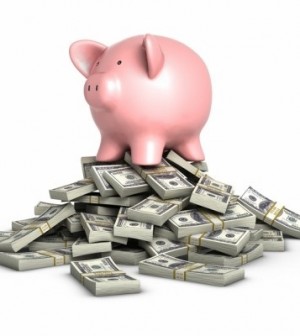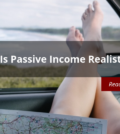- 4 Unexpected Things I’ve Learned From Buying My First Mobile Home Park
- How Ironic: America’s Rent-Controlled Cities Are Its Least Affordable
- U.S. homes are still a bargain on the international market
- Getting The Best Possible Quality Photos On MLSs and Syndicated Sites
- Home buyers in these markets have the upper hand
How to Finance & Profit From Cheap Real Estate ($30k)

Like fire bolts out of the sky, there have been quite a few posts (or should I say daggers) thrown around the #biggerpocketsphere (yes, you heard this term here first, folks…) about the 2% rule or 1% rule or whether you should buy under $30k or over $30k. Or “I am a better investor because I am taller than you” (I am well over 6 foot, so probably — and I can actually reach the roof if I am on an incline on the side of a ranch house that is headed up hill). Or “My investment makes .09374% over yours,” or “My paint color is actually far superior to yours; let’s be honest, mine is obviously better.”
Why? Because it’s mine.
Welp. That cleared it up.
Or maybe not.
Why I Like the $30k Investment Property
You see, I initially chose to buy houses in the $30k range because it was an area I understood, they were houses I could afford, and the rate of returns on the properties were solid — in the 2% range.
None of this tells the whole picture. A point many of these posts make is that any place you can buy a $30k house, you can probably buy crack, get shot at, and most likely not walk around after dark — or at all without guns and a bodyguard. I can’t speak for every square block of the continental United States, but I can speak to this:
- I have owned houses that cost more than $30k that were in terrible neighborhoods that I regretted buying.
- I have owned houses that cost more than $30k that were in great neighborhoods.
- I have owned houses that cost less than $30k that were in great neighborhoods.
I can also say, now that I know the neighborhoods to buy in, I haven’t bought a house recently at this price point that wasn’t safe, that wasn’t a solid house, that was in a “bad” area of town, and that didn’t make a great return on investment. The one I just bought a few months ago was $26k, and I put about $5k into it. It’s cute as a button, and my management company calls it “the dollhouse.”
As far as the tenants, they pay on time (usually), everything is ACH transferred, and I receive the funds to my bank account.
After thinking through what some may deem the armpit of the real estate investment world, let me help clear up a few things if you find yourself looking at this price point, interested in making 20-25% ROI, and you can’t figure out if you should pull the trigger or not.
3 Keys to Succeeding With a $30k Rental Property
1. Understand: it’s $30k… Not $300k or $3m
Guess what, I don’t put granite in my $30k rental houses! I know… crazy, you say. And I also don’t put high end finishes or finely crafted vanities or cabinets.
I DO do the following: make sure the roof is in great condition, as well as all other major expense things, like the HVAC, plumbing system, and electrical system — and I have those things built into my purchase and renovation at the beginning of the project. We make sure the property is clean. We have started to put in tub surrounds and new plumbing lines to the shower/tub. The surround is relatively cheap; we are able to check the plumbing in the bathroom at that time, and the surrounding is easily fixable if there is an issue. We also put money into good, working toilets, faucets, and anything that nickel and dimes us with maintenance later.
Also keep in mind, $30k here in the Midwest is definitely different than $30k in South Florida, or San Diego, or Orange County, or Maui. It’s not the prince’s palace. But it’s a house, a pretty decent house. I can’t buy a house with a bad roof and a broken basement in this price range; it doesn’t make finance sense. But I can put a roof on a house in this range if the kitchen and bathrooms are in okay shape and the house needs things more like paint, carpet or vinyl flooring.
2. Know that Paying $30k Doesn’t Mean You Should Buy in Bad Areas
My properties are in areas where I have driven, chatted up neighbors, walked, and spent a lot of time doing the “homework.”
Understand the demographic who lives in the surrounding blocks of the subject house you are interested in and what the ebb and flow of the neighborhood is. Sometimes it’s simple: it’s families in the neighborhood, and they don’t make a lot of money. It doesn’t mean they don’t take care of their properties, or they aren’t good people. These kinds of neighborhoods can have terrible pockets with a few blocks you don’t want to buy on, or the reverse.
Also keep in mind that for places where there is only a small area that is in good condition, it is more likely that the area can slip quickly into a neighborhood you wouldn’t want to be in if a few more houses become vacant or tenants and owners stop taking care of the properties.
The bad areas of town provide even higher ROI, but there is often active gang activity, higher criminal incidents, and having owned properties in some of these neighborhoods (in my earlier days… I don’t buy there anymore), I also felt the quality of tenant was not great in terms of them caring for the property, and I ended up dealing with costs associated with tenant turnover. I did read the book The Section 8 Bible, and good for those guys. It wasn’t for me.
3. Aim to Set a Precedent With a Nicer House Than the Average in the Neighborhood
The last few properties we have done, I’ve spent just a little more time and a little more money on them. We are talking a LITTLE bit of money, as well as a little creativity. The reasoning was, looking at the surrounding comparable properties, I felt that we could get a better tenant — and make more money in the long run — if we made it a little nicer. With the caveat that I don’t believe this is true in all areas, you need to make sure you think through this proposition. In the section 8 houses I used to own, this was not typically the case, and I spent a lot of unnecessary money.
When you or the property manager meet with the renters, explain your philosophy. It’s a great house, and we have done “x,y, and z” to make sure that all the systems in the house are working. And it’s well insulated, so your utilities will be low, and it has a grand new _____ ,_____ , and _____. And our expectation is that when you move out, the walls look as good as they do now, and the carpet is easily cleaned, or you will be paying for these things to be fixed/replaced.
Maintenance is an ROI killer. I have learned this the hard way. We need to stay more on top of issues in these houses because they are typically older, and things do break. Make sure you are in the property a few times a year, and make sure you are communicating with the tenants about what is going on. Explain to them it is not a bad thing for them to call you; you want to know if there is an issue.
Now, on to the lending.
Both Creative Financing and Bank Financing Work
There are two ways I have purchased these properties.
Private Mortgage
I put down 30%, and the private mortgage holder had a first lien position mortgage. In this area, I paid about 10% interest on the mortgage, and it was a 30 yr AM (amortized over 30 years) with a 3 year balloon.
Bank Financed
Yes, I know. There are a lot of banks that don’t touch anything under $50k or $75k. But there are many that do.
Here is the secret: Pick up your telephone.
Community banks, credit unions, and nearly any bank that makes local underwriting decisions (so far that I have found) has been able to do whatever loan amount they wanted. And even better, it is typically on the lower end of the mortgage person’s approval amount; as in, the mortgage person has an approval amount they can do themselves, and then typically the branch VP or President will have an amount much greater than the mortgage banker, and they can approve up to that amount in house. One who I know can approve up to $250k in house.
With the banker, you are paying rates above the owner occupant, but I just got a mortgage on a house for 5.5% and 1 point — for a $30k loan balance. Tell me that ain’t sweet! Yeah, it is.




 100% Secure
100% Secure
You must be logged in to post a comment Login